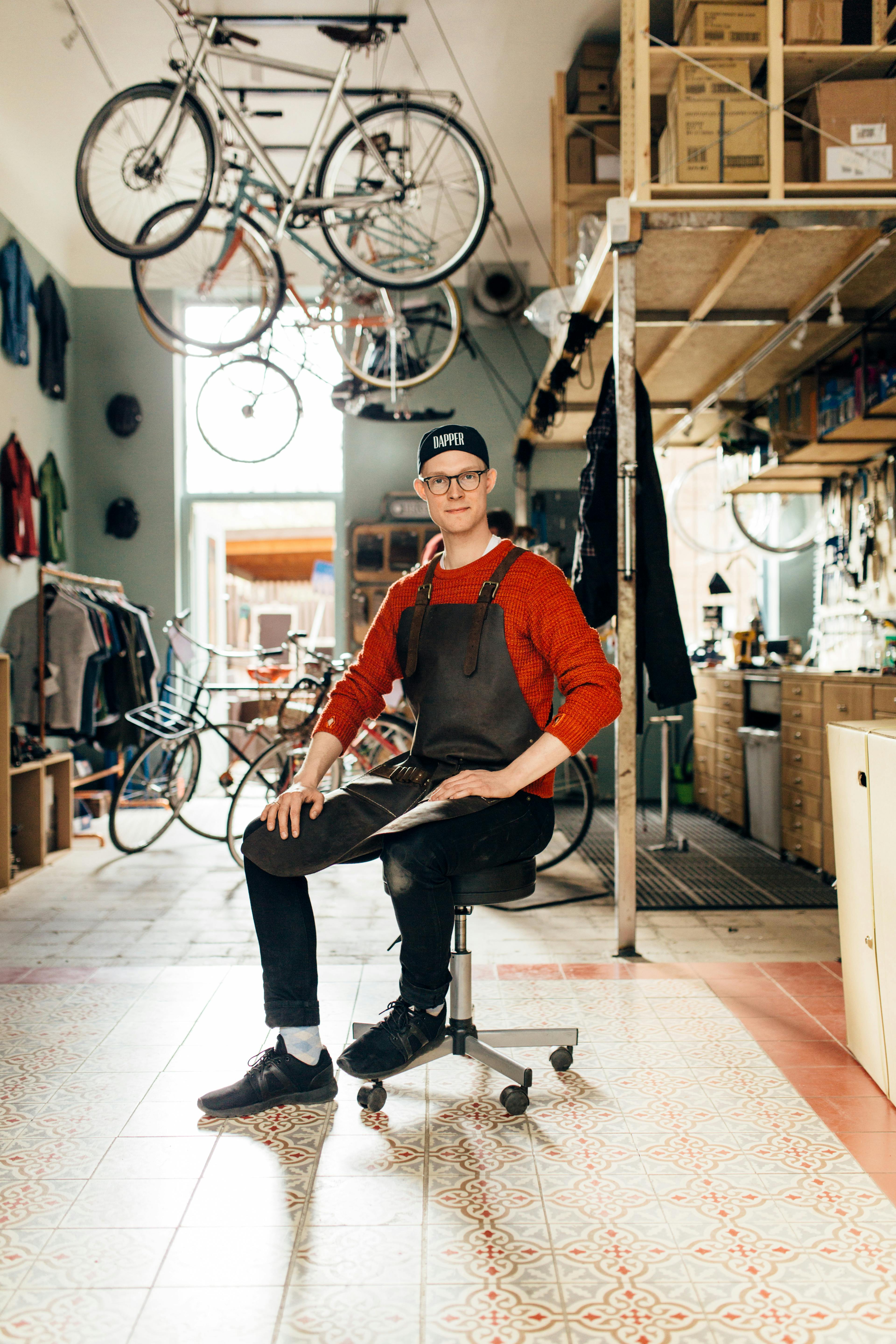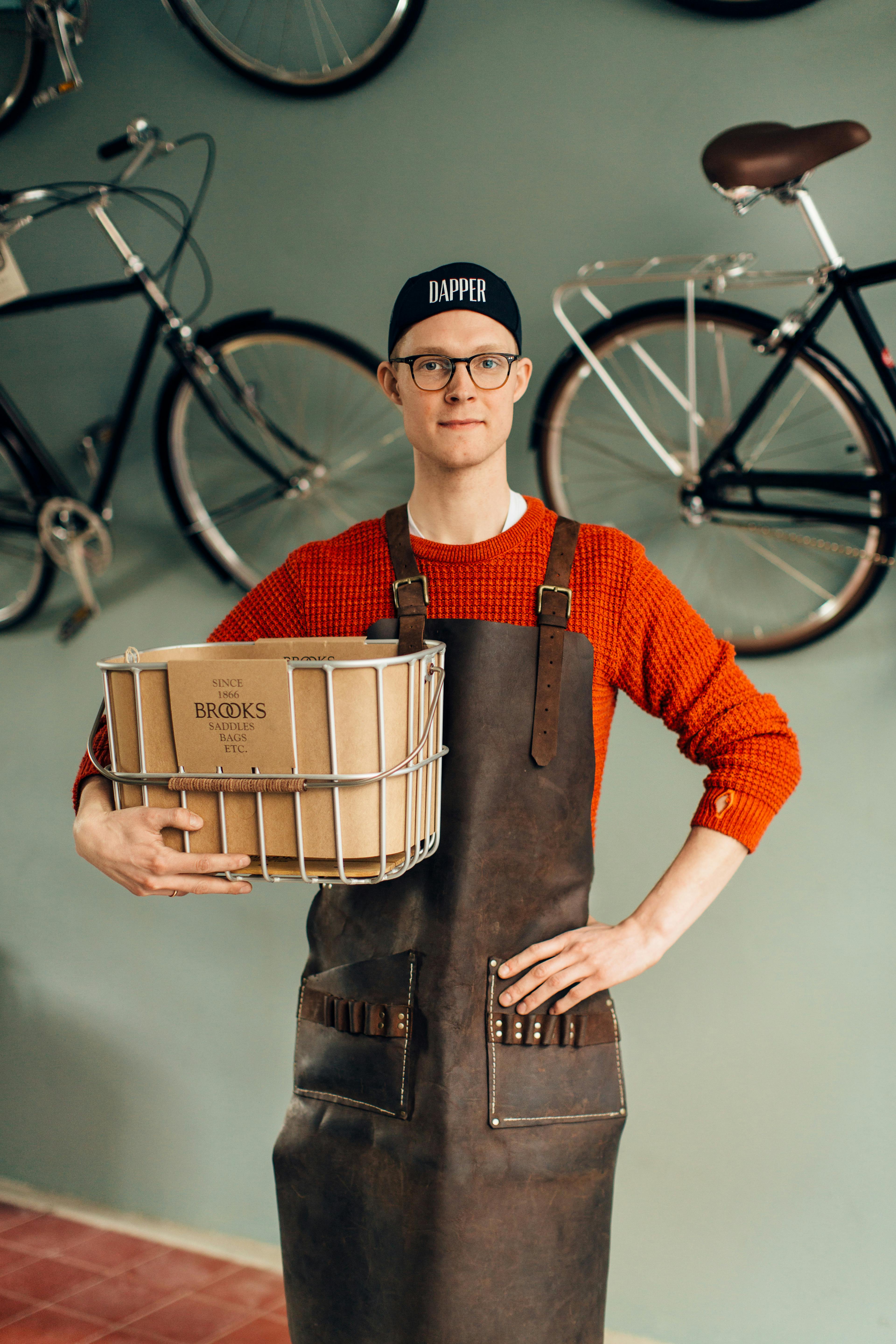Quality control
As the first shop specializing in urban bikes in Oslo, Dapper Krankenhaus have had the freedom to pick brands from the top shelf. The admiration for good quality is present in everything they do.

Text: Silje Strømmen
Photos: Andris Søndrol Visdal
- There is a good hill on your left there, Johan, co-owner of Dapper Krankenhaus, a combined bicycle shop and workspace, shouts after a costumer who is taking a turquoise Pelago Capri out for a trial spin. Krankenhaus is the new name for the bicycle division of Dapper, Oslo’s famous store for traditional shaving, streetwear and bikes alike.
- We wanted to make it clear that we are a proper bike shop, with components, accessories and workshop, says Johan.
Even though it’s a rainy Saturday the shop is filled with costumers waiting to discover their new bike. For Dapper, quality is their main focus. Their mission is to get the population of Oslo out and about on good quality bikes.
- We enjoy quality. Over the years a trend has evolved, where people buy bikes from the regular sports store at a low price, with equally low quality. That trend has led to a “use and dispose” culture, co-owner Erlend, tells us and elaborates:
- A bike contains such a high number of pieces, and they are often imported from the east at a very cheep rate. When shops are able to sell them at such a low rate, something is not right. We are concerned with top quality in our products, and the prices naturally reflect that. If you chip in a little more it will, in the long run, pay off.
A diverse landscape
As the first shop specializing in urban bikes in Oslo, Dapper Krankenhaus have had the freedom to pick brands from the top shelf. Among their stock are brands like Pashley, Pelago, Electra and Schindelhauer. Even though the prices are reflected in the bikes, the one thing that has surprised Erlend in the two years since Dapper first opened their doors, is just how much money some people are willing to spend on a bike.
- But then again, some want the best. Our costumer group is expansive. We now see a lot more women coming in than in the beginning.
The shop first opened it’s doors in 2013. On this particular day the group of costumers hanging around in the small workspace, admiring bikes from Pelago and Pashley, are mostly women aged 30+. Common to them all: they are looking for a bike that will take them to and from work. While bikes produced in the Netherlands and Denmark are often very beautiful, they are built for flat cities. Oslo on the other hand, is defined by a more diverse landscape.
- The Dutch and Danish bikes work perfectly in the Netherlands and Denmark, but in Oslo we need lighter bikes with more gears, Johan explains.
- The Pelago Brooklyn is our most popular bike for women. It looks like a Dutch city bike, but weighs less and has eight gears, not three, making it ideal for Oslo.

Bikes over cars
On the subject of Oslo: back in 2014, a year after Dapper first opened, they announced in an interview with Arkitektnytt.no that in addition to running a shop, they wanted to affect urban development. Have they achieved that?
- I feel like we have. Although it is hard to say how much influence we have had, we have at least made it easier for Oslo citizens to buy a city bike made for Norwegian conditions. There are more people bicycling today than there were two years ago and a lot has been improved. Thanks to the people, Oslo has become a bicycle city, Erlend declares.
- Because of our lobbying, the Commissioner of Transportation has started an initiative to replace car parking spots outside of storefronts with bicycle parking. We just received ours next to Krankenhaus, and the program is spreading to other shops.
But there is still a long way to go.
- Within the city council there is will to contribute to change, but somewhere within the system it stops. Just look at Bjørvika! The road is 45 m wide, but the cycle lane is only given 1.5 m on each side, and if a buss comes to a stop at a bus stop the bikers need to go out in the road or up on the sidewalk in order to pass. When building new roads, bikes should be prioritized over cars.